Complete text and all illustrations for the monograph [2e] by Dr Jan Pajak,
"The Oscillatory Chamber, Arkway to the Stars" (1994, ISBN 0-9583380-0-0)
Links to illustrations and related texts:
Labels: The label "E" marks the web page with text of English-language version of this monograph.
The label "1st, 2nd, 3rd Figures" mark the web pages with illustrations for subsequent volumes and chapters.
The label "P" marks the web page with text of a Polish-language equivalent of this monograph.
The label "X" marks the web page with the text of English-language version of this monograph
which is designed so as to load much faster because it does NOT show graphics at the loading
stage but only after the user clicks on subsequent Figures to display them.
Chapter F:
 [2e] Figure F1: The evolution of the Oscillatory Chamber. [2e] Figure F1: The evolution of the Oscillatory Chamber.
 [2e] Figure F2: The appearence of the Oscillatory Chamber. [2e] Figure F2: The appearence of the Oscillatory Chamber.
 [2e] Figure F3: The neutralization of the electro-magnetic forces. [2e] Figure F3: The neutralization of the electro-magnetic forces.
 [2e] Figure F4: The "twin-chamber-capsule" composed of two Oscillatory Chambers located one inside of the other. [2e] Figure F4: The "twin-chamber-capsule" composed of two Oscillatory Chambers located one inside of the other.
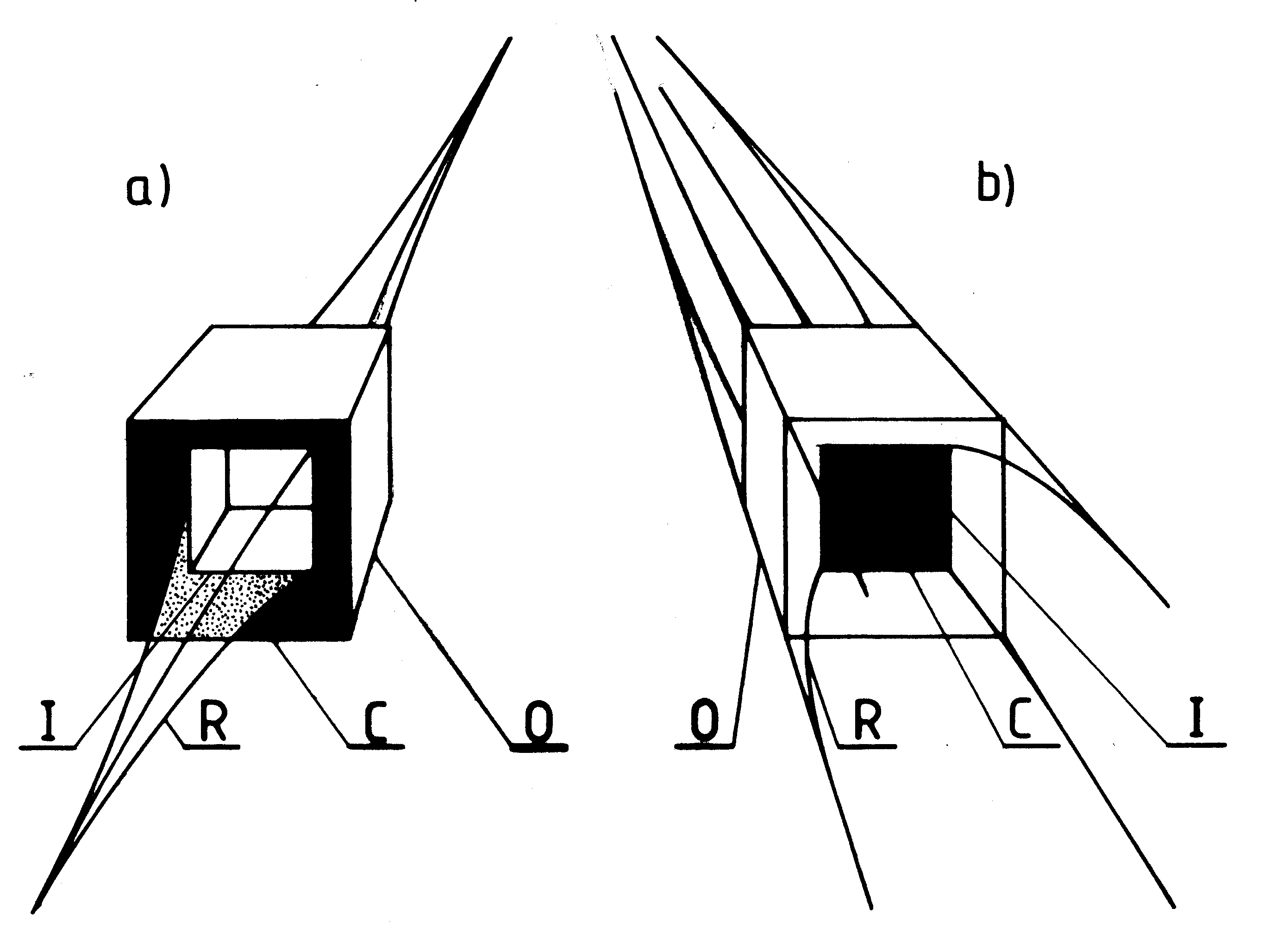 [2e] Figure F5: Appearances if two twin-chamber capsules working in two different modes of operation. [2e] Figure F5: Appearances if two twin-chamber capsules working in two different modes of operation.
 [2e] Figure F6: Outputs from both chambers of a "twin-chamber capsule". [2e] Figure F6: Outputs from both chambers of a "twin-chamber capsule".
 [2e] Figure F7: An arrangement of oscillatory chambers called "spider configuration". [2e] Figure F7: An arrangement of oscillatory chambers called "spider configuration".
 [2e] Figure F8: The curve of the "interaction in equilibrium". [2e] Figure F8: The curve of the "interaction in equilibrium".
 [2e] Figure F9 (a): Working model of the chamber in darkness. [2e] Figure F9 (a): Working model of the chamber in darkness.
 [2e] Figure F9 (b): Photograph of an experimental station for constructing an Oscillatory Chamber. [2e] Figure F9 (b): Photograph of an experimental station for constructing an Oscillatory Chamber.
 [2e] Figure F10: The justification for needle-shaped electrodes. [2e] Figure F10: The justification for needle-shaped electrodes.
Chapter H:
 [2e] Figure H1: A four-propulsor Magnocraft. [2e] Figure H1: A four-propulsor Magnocraft.
 [2e] Figure H2: Propulsors in a four-propulsor Magnocraft of the first generation. [2e] Figure H2: Propulsors in a four-propulsor Magnocraft of the first generation.
Chapter I:
 [2e] Figure I1 (a): The Magnocraft and the personal propulsion system. (a) Magnocraft type K3 in hanging position. [2e] Figure I1 (a): The Magnocraft and the personal propulsion system. (a) Magnocraft type K3 in hanging position.
 [2e] Figure I1 (b): The propelling system in personal propulsion. [2e] Figure I1 (b): The propelling system in personal propulsion.
 [2e] Figure I2: The standard personal propulsion garment. [2e] Figure I2: The standard personal propulsion garment.
 [2e] Figure I3 (left): External forces acting in a personal propulion system. [2e] Figure I3 (left): External forces acting in a personal propulion system.
 [2e] Figure I3 (right): Internal forces in personal propulsion (they explain the frequent flight of UFOnauts in a squat position). [2e] Figure I3 (right): Internal forces in personal propulsion (they explain the frequent flight of UFOnauts in a squat position).
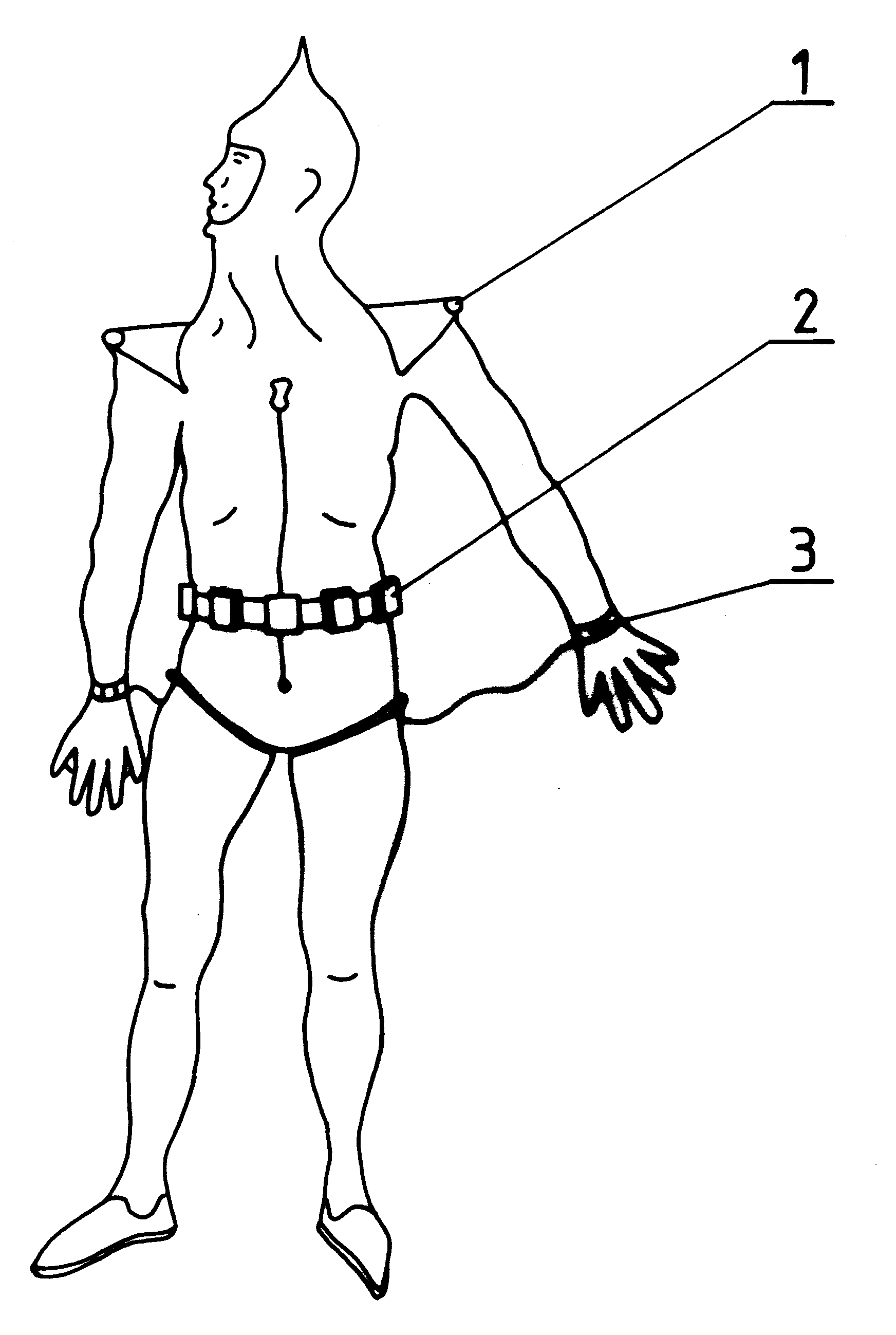 [2e] Figure I4 (a): personal propulsion with propulsors in epolettes. [2e] Figure I4 (a): personal propulsion with propulsors in epolettes.
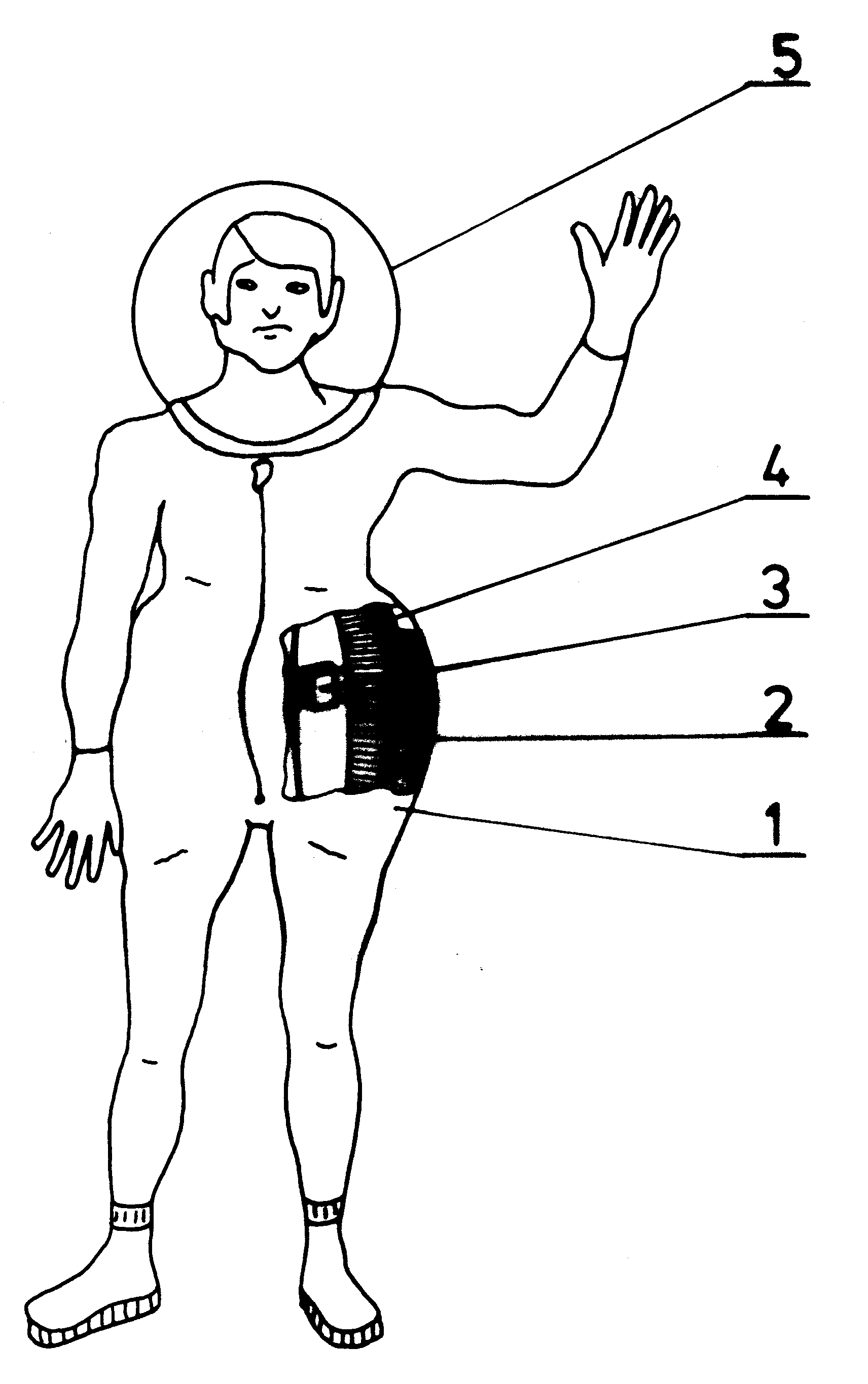 [2e] Figure I4 (b): personal propulsion with helmet and cushions around hips. [2e] Figure I4 (b): personal propulsion with helmet and cushions around hips.
Chapter K:
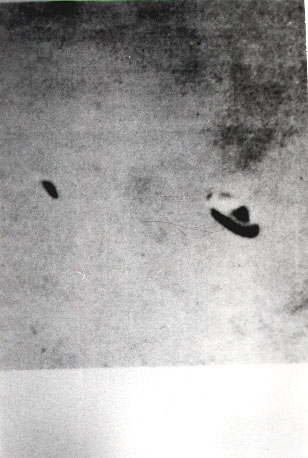 [2e] Figure K1: Comparison of Magnocraft type K3 and a UFO type K3. A photograph of a UFO type K3. [2e] Figure K1: Comparison of Magnocraft type K3 and a UFO type K3. A photograph of a UFO type K3.
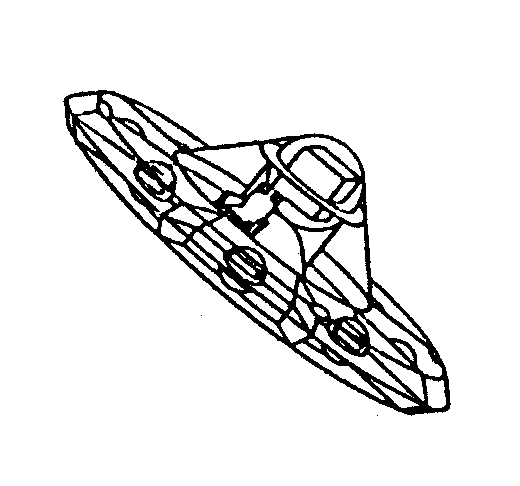 [2e] Figure K1 (framed): A drawing of Magnocraft type K3 in the sdame position as that UFO. [2e] Figure K1 (framed): A drawing of Magnocraft type K3 in the sdame position as that UFO.
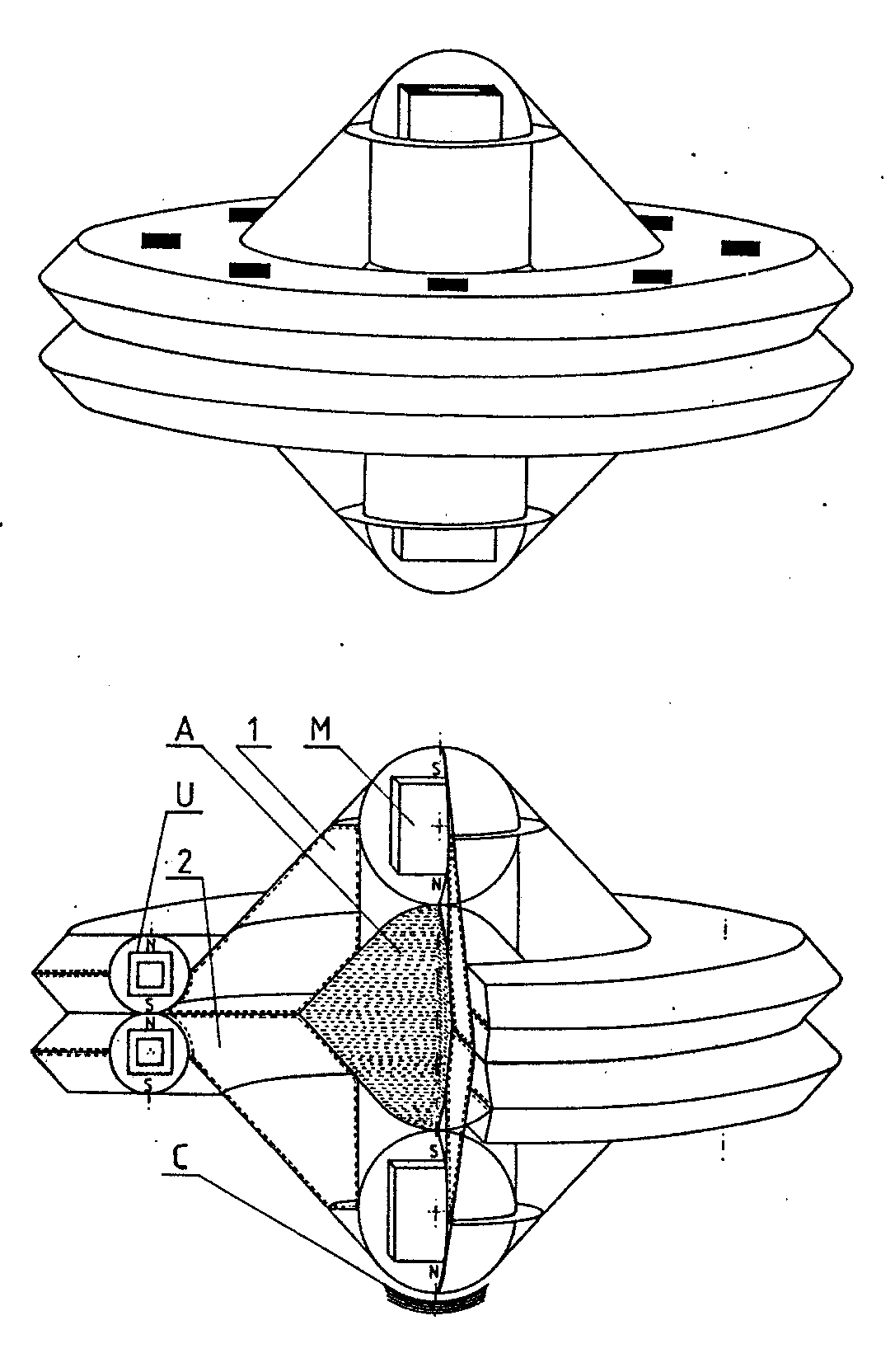 [2e] Figure K2: Spherical flying complex of two UFOs type K6. Shown are side appearences of such a spherical flying complex, but composed of two Magnocraft type K3. [2e] Figure K2: Spherical flying complex of two UFOs type K6. Shown are side appearences of such a spherical flying complex, but composed of two Magnocraft type K3.
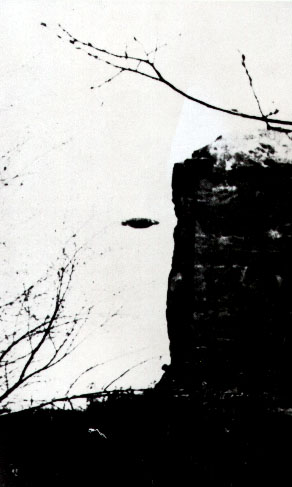 [2e] Figure K2 (a): Photograph of Thorns spherical UFO type K6. [2e] Figure K2 (a): Photograph of Thorns spherical UFO type K6.
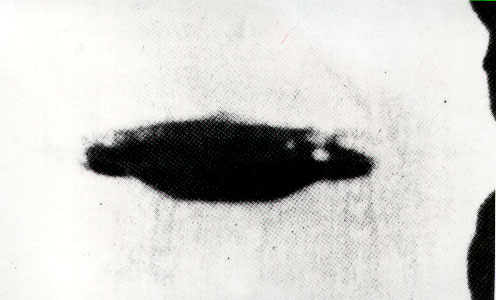 [2e] Figure K2 (b): Enlargement of UFOs from Thorns photo. [2e] Figure K2 (b): Enlargement of UFOs from Thorns photo.
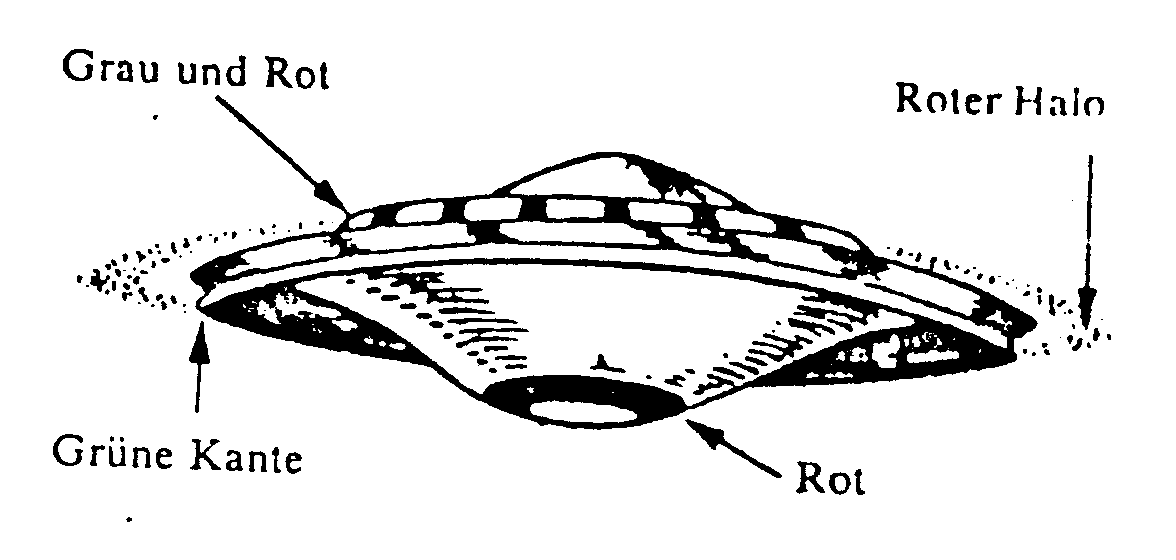 [2e] Figure K2 (c): Shape of Thorns UFO in GICOFF reconstruction. [2e] Figure K2 (c): Shape of Thorns UFO in GICOFF reconstruction.
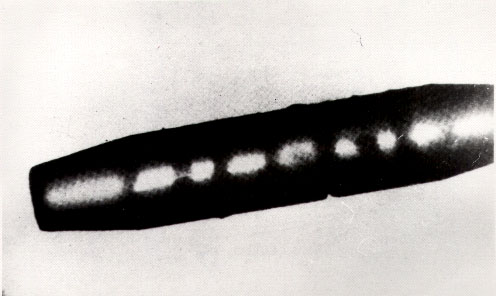 [2e] Figure K3 (a): Cigar-shaped UFO from Palomar Gardens, 1952. [2e] Figure K3 (a): Cigar-shaped UFO from Palomar Gardens, 1952.
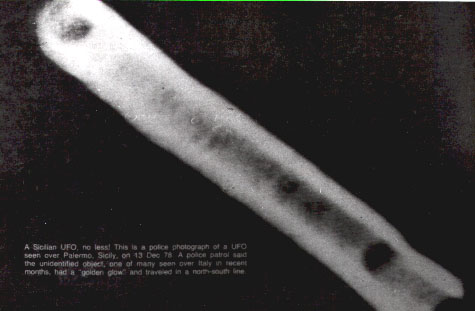 [2e] Figure K3 (b): Cigar-shaped UFO from Palermo, Sicily, 1978. [2e] Figure K3 (b): Cigar-shaped UFO from Palermo, Sicily, 1978.
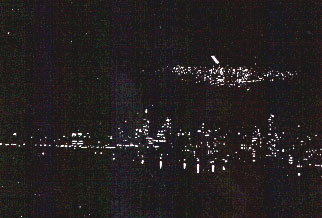 [2e] Figure K3 (c): Cigar-shaped UFO above New York, 1950. [2e] Figure K3 (c): Cigar-shaped UFO above New York, 1950.
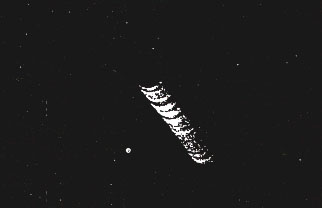 [2e] Figure K3 (d): An enlargement of the cigar-shaped UFO from New York shown in part (c). [2e] Figure K3 (d): An enlargement of the cigar-shaped UFO from New York shown in part (c).
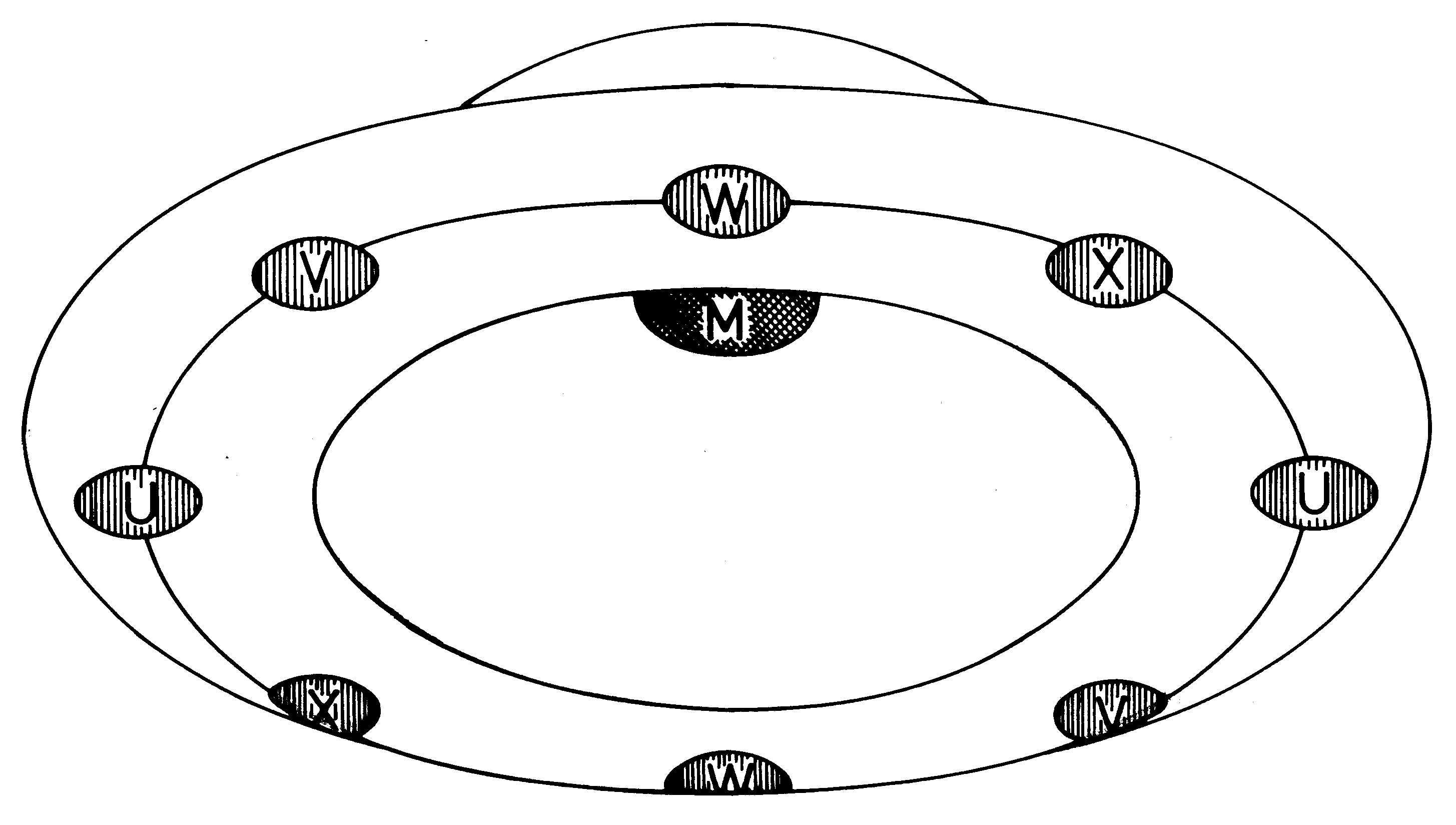 [2e] Figure K4 (A): The location of propulsors in UFOs and Magnocraft. Magnocraft type K3 propulsors shown from below. [2e] Figure K4 (A): The location of propulsors in UFOs and Magnocraft. Magnocraft type K3 propulsors shown from below.
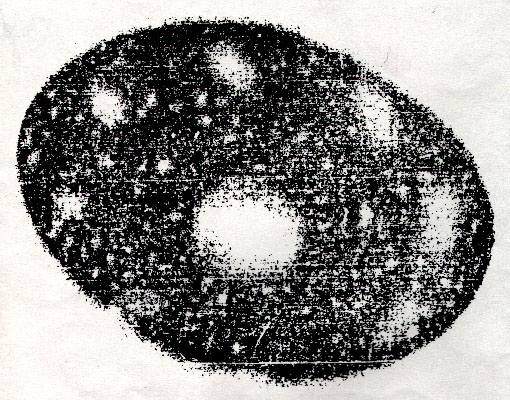 [2e] Figure K4 (B): Photo of a UFO type K3 from below, that reveals the location of vehicle's magnetic propulsors. [2e] Figure K4 (B): Photo of a UFO type K3 from below, that reveals the location of vehicle's magnetic propulsors.
 [2e] Figure K5(#1): Photographs of UFOs documenting the pulsations of their magnetic field. Principles involved in photographing of field pulses in fast moving UFOs. [2e] Figure K5(#1): Photographs of UFOs documenting the pulsations of their magnetic field. Principles involved in photographing of field pulses in fast moving UFOs.
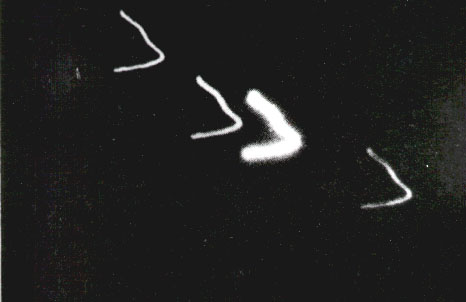 [2e] Figure K5(#2): Fast flying UFO from Chamberlain. Pulses in ionised air are clearly visible. [2e] Figure K5(#2): Fast flying UFO from Chamberlain. Pulses in ionised air are clearly visible.
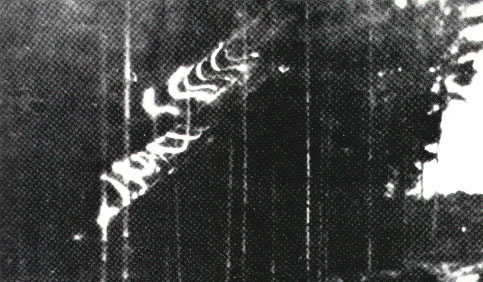 [2e] Figure K5(#3): Pulsating UFO of Karl Maier taken in 1962. [2e] Figure K5(#3): Pulsating UFO of Karl Maier taken in 1962.
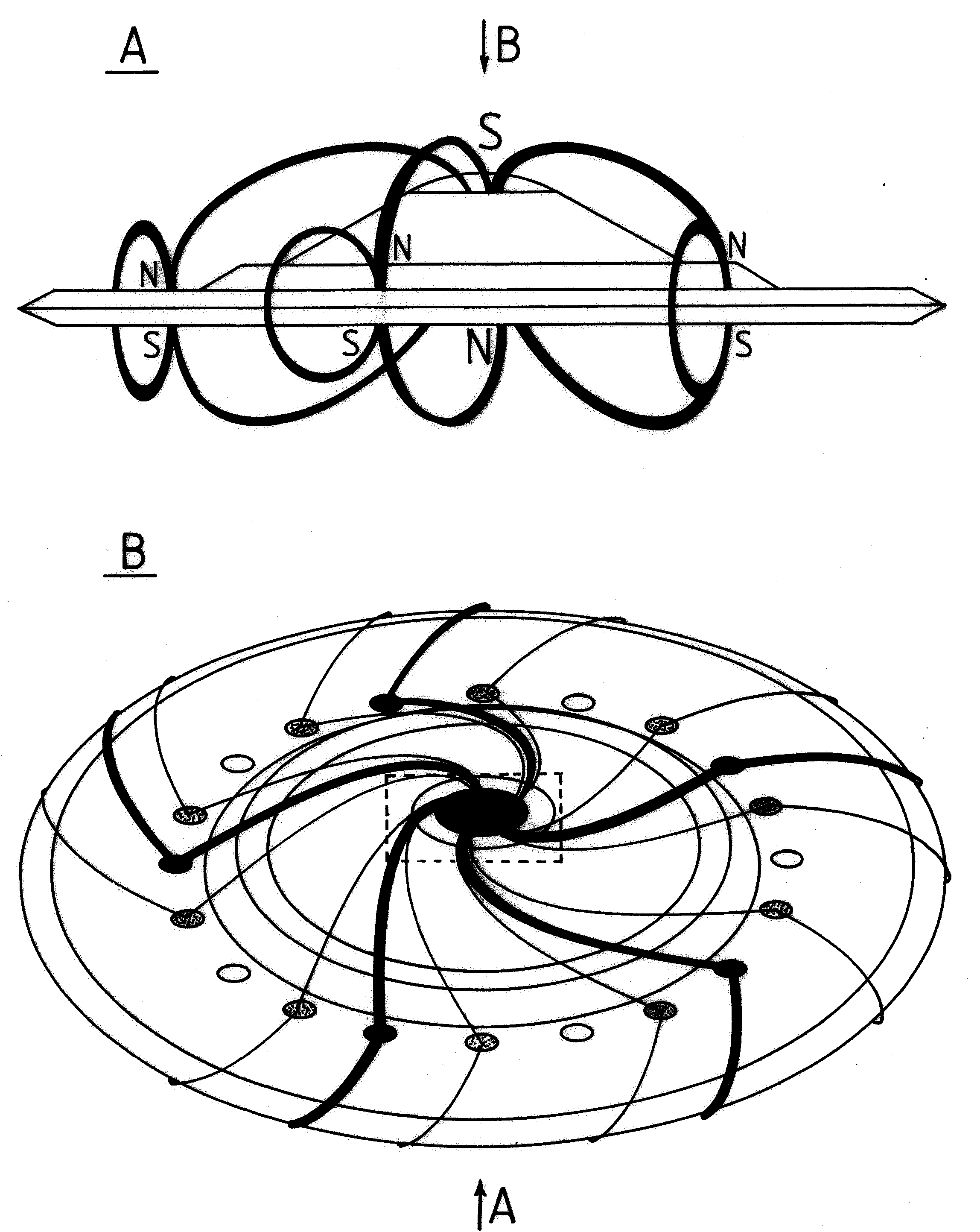 [2e] Figure K6(AB): The path of magnetic circuits shown on the outlines of Magnocraft type K6. [2e] Figure K6(AB): The path of magnetic circuits shown on the outlines of Magnocraft type K6.
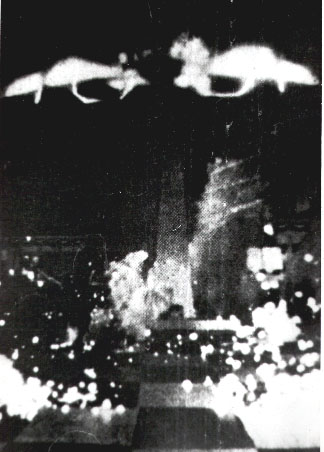 [2e] Figure K6(C): Side photograph of UFOs, which illustrate the course of their magnetic circuits. [2e] Figure K6(C): Side photograph of UFOs, which illustrate the course of their magnetic circuits.
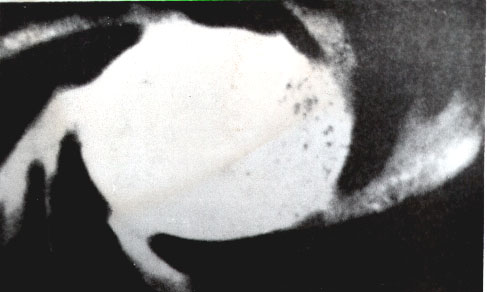 [2e] Figure K6(D): Fragment of UFO magnetic circuits just around the main propulsor, taken from below. [2e] Figure K6(D): Fragment of UFO magnetic circuits just around the main propulsor, taken from below.
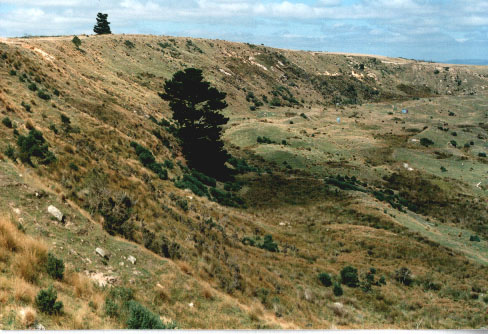 [2e] Figure K7: An eastern section of the Tapanui Crater where UFOs exploded in 1178 AD. [2e] Figure K7: An eastern section of the Tapanui Crater where UFOs exploded in 1178 AD.
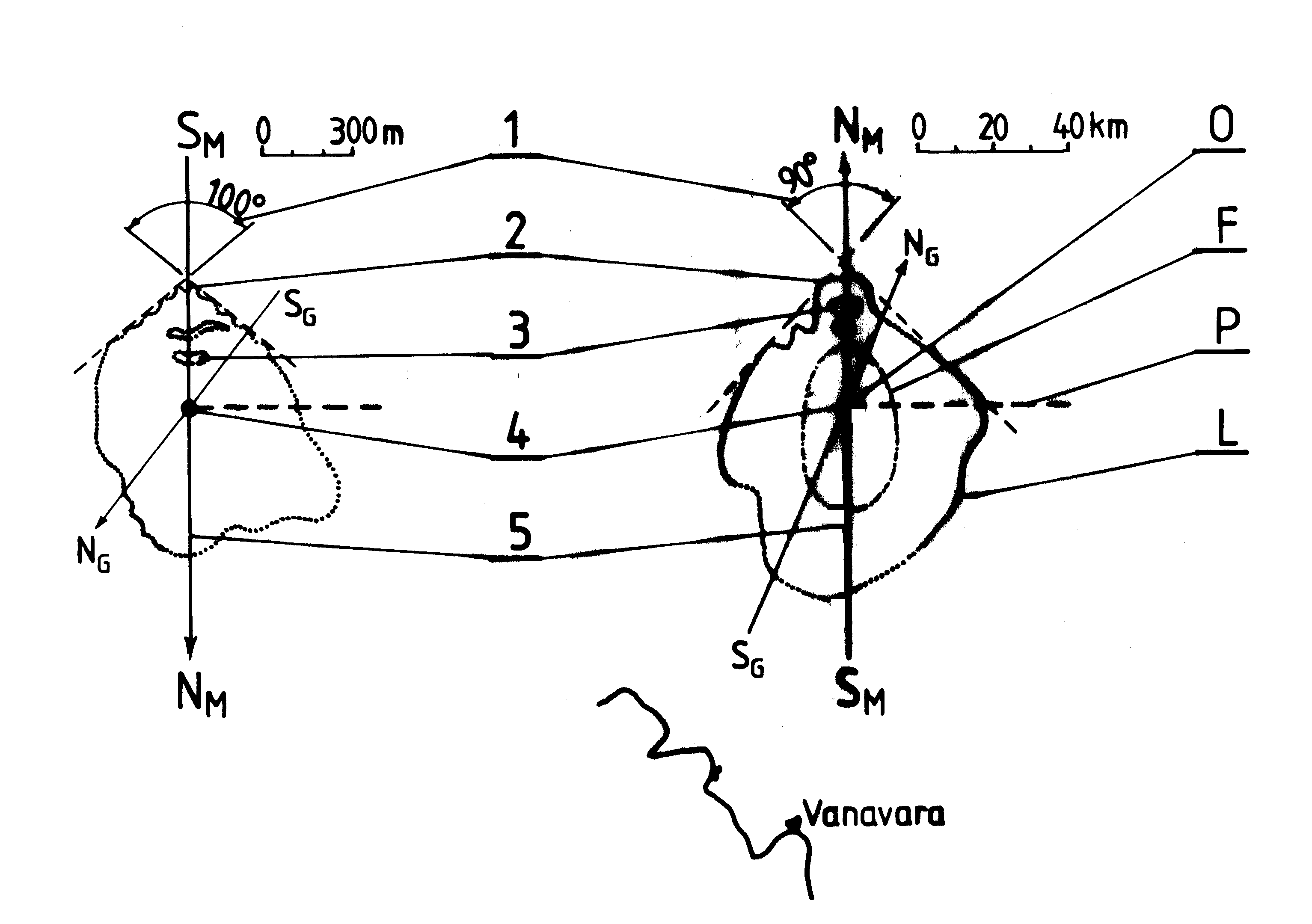 [2e] Figure K8: Similarities between UFO explosion sites in Tapanui, New Zealand, and in Tunguska, Siberia. [2e] Figure K8: Similarities between UFO explosion sites in Tapanui, New Zealand, and in Tunguska, Siberia.
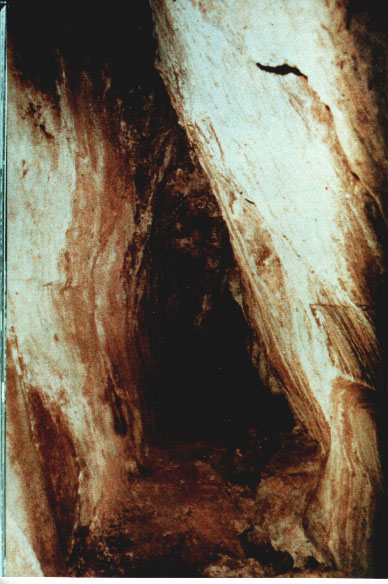 [2e] Figure K9 (a): The tunnel Morona-Santiago in Equador also evaporated by a UFO. [2e] Figure K9 (a): The tunnel Morona-Santiago in Equador also evaporated by a UFO.
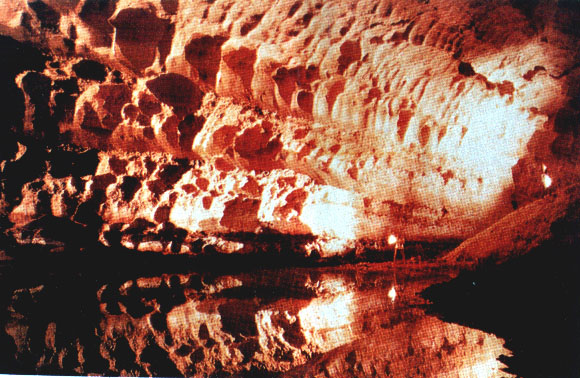 [2e] Figure K9 (b): The Cocklebiddy Cave in Australia evaporated by UFOs. [2e] Figure K9 (b): The Cocklebiddy Cave in Australia evaporated by UFOs.
 [2e] Figure K9 (c): Shape and course of the Cocklebiddy Cave. [2e] Figure K9 (c): Shape and course of the Cocklebiddy Cave.
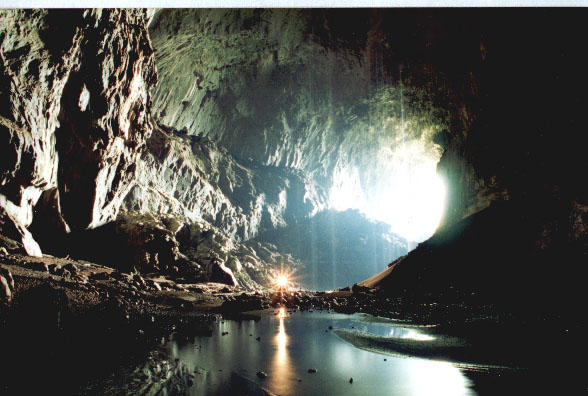 [2e] Figure K9 (d): The Deer Cave in Borneor evaporated in rocks by UFOs type K8. [2e] Figure K9 (d): The Deer Cave in Borneor evaporated in rocks by UFOs type K8.
 [2e] Figure K9 (e): Myself (Dr Jan Pajak) at the South entrance to Deer Cave. [2e] Figure K9 (e): Myself (Dr Jan Pajak) at the South entrance to Deer Cave.
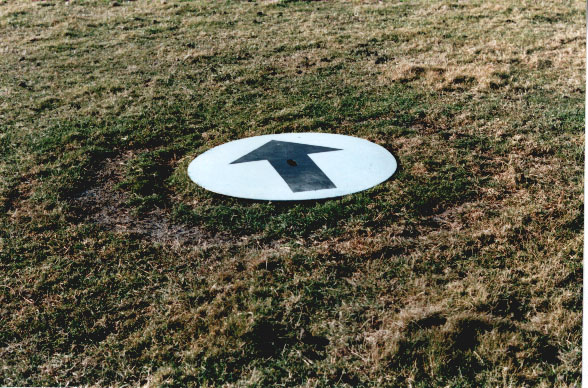 [2e] Figure K10 (A): A photo of a UFO landing composed of two concentric rings. [2e] Figure K10 (A): A photo of a UFO landing composed of two concentric rings.
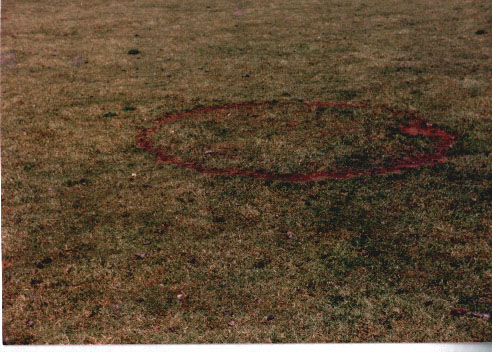 [2e] Figure K10 (B): A landing of K3 type UFO composed of one ring and a central scorching. [2e] Figure K10 (B): A landing of K3 type UFO composed of one ring and a central scorching.
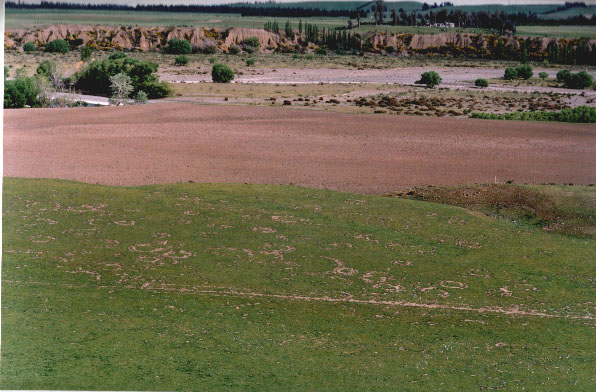 [2e] Figure K10 (C): A Double rings formed on sides of landed UFOs. [2e] Figure K10 (C): A Double rings formed on sides of landed UFOs.
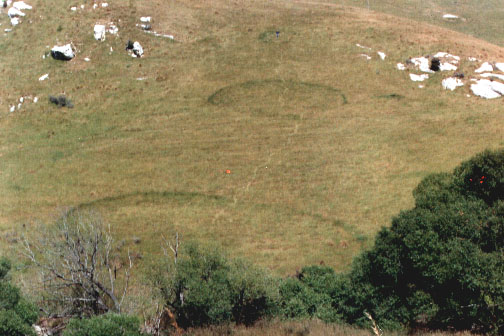 [2e] Figure K10 (D): A photo of landing of K4 UFOs which document the binary progression in sizes of UFOs (i.e. the fact that each bigger type of UFOs is twice as big as previous type). [2e] Figure K10 (D): A photo of landing of K4 UFOs which document the binary progression in sizes of UFOs (i.e. the fact that each bigger type of UFOs is twice as big as previous type).
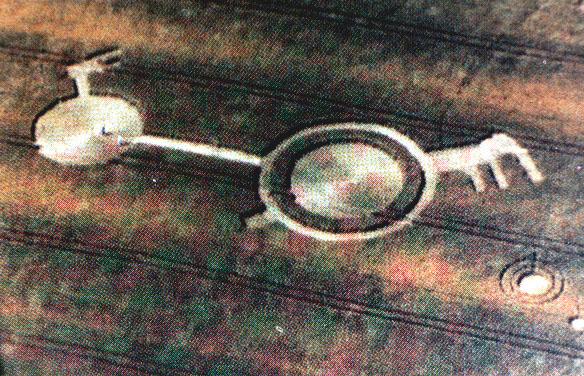 [2e] Figure K11 (a): Landing sites flatten by flying clusters of UFOs. Crop circles from K6 type of UFOs, England. The exact configuration of K6 vehicles which formed this crop circle is shown in Figure F13 from monograph [1/4e], and also in Figure G17 from this monograph. [2e] Figure K11 (a): Landing sites flatten by flying clusters of UFOs. Crop circles from K6 type of UFOs, England. The exact configuration of K6 vehicles which formed this crop circle is shown in Figure F13 from monograph [1/4e], and also in Figure G17 from this monograph.
 [2e] Figure K11 (a - 2): Interpretation of the UFO landing site shown in the previous part (a) of this Figure. Descriptions of subsequent symbols from this drawing are provided in captions for illustrations from monograph [2e], and also in the text of monograph [2e]. [2e] Figure K11 (a - 2): Interpretation of the UFO landing site shown in the previous part (a) of this Figure. Descriptions of subsequent symbols from this drawing are provided in captions for illustrations from monograph [2e], and also in the text of monograph [2e].
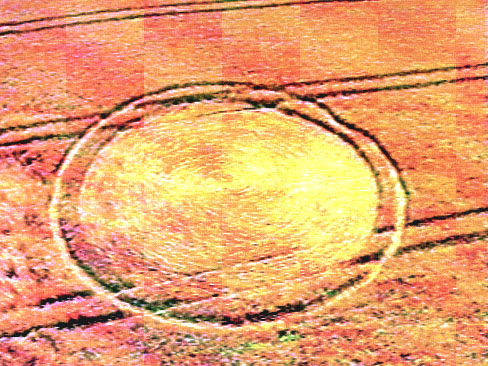 [2e] Figure K11 (b - high): Crop circle from Ashburton, New Zealand, February 1992. Photo of the whole circle. [2e] Figure K11 (b - high): Crop circle from Ashburton, New Zealand, February 1992. Photo of the whole circle.
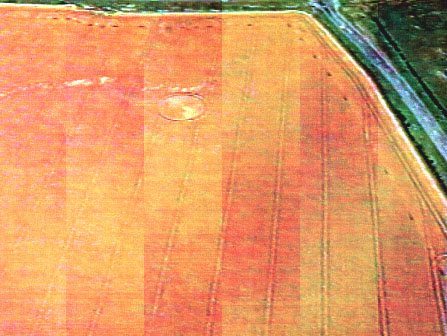 [2e] Figure K11 (b - low): Aerial photo of the field with this Ashburton circle, February 1992. [2e] Figure K11 (b - low): Aerial photo of the field with this Ashburton circle, February 1992.
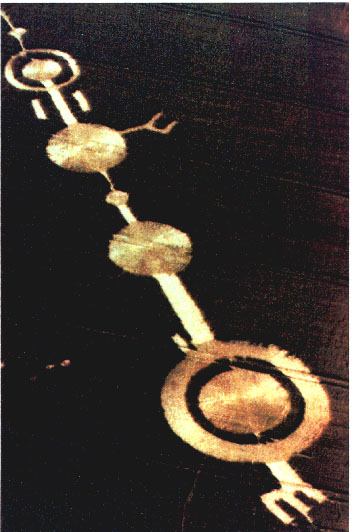 [2e] Figure K11 (c): Landing of a liner clusted of UFOs from England. [2e] Figure K11 (c): Landing of a liner clusted of UFOs from England.
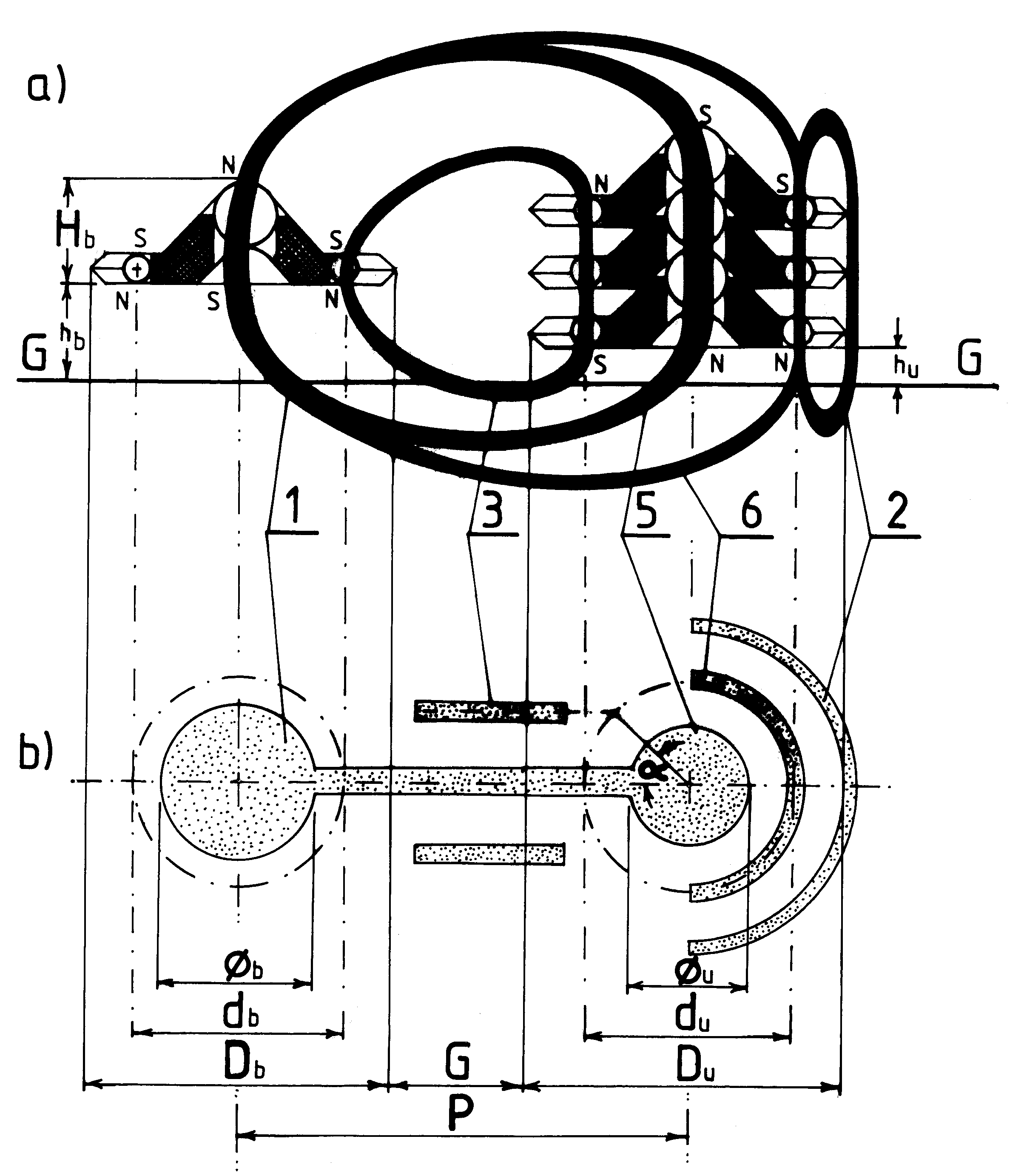 [2e] Figure K12: Mathematical relationships in crop circles flattened by UFOs (see also Figure G17 from this monograph). [2e] Figure K12: Mathematical relationships in crop circles flattened by UFOs (see also Figure G17 from this monograph).
Instructions:
Part G: How to
replicate
this web page in your own computer:
For some readers that work
on problems addressed on this web page, it would be highly
beneficial to have a replica of this web page together with
all the illustrations, texts, links, etc., in their own
computer. After all, in case of having such a replica, one
can later view this web page, or print it, directly from
his/her own computer, not from the Internet. Thus one becomes
independent from the access to Internet in each situation
when he/she wishes to have a good look at this web page or
at illustrations that this page displays. Waiting for
opening a web page is then also incomparably shorter
than waiting for opening an Internet page. It is then
also not needed to put up with all these subtle obstructions
which seem to plague my web pages almost as it these are
purposely sabotaged by "little green UFOnauts" of some sort.
So for these readers, who wish to make a "source replica"
of this web page in their own computer, below I am describing
step-by-step how to accomplish this. This description reveals
thoroughloy how to prepare the so-called "source replica" of
the web page, means a replica prepared in the programming
language called "HTML" in which this web page was originally
coded. Note that such a "source replica" is much better than
an "image replica" that almost every browser allows to make
in quite a simple way. For example it allows to gradually
complete all missing components of a given web page (e.g.
missing illustrations or text files) from other servers.
It alows to update separately each selected component of
the web page as soon as we meet in Internet their better
versions. It also allows us to learn principles of web
page programming, thus it can be for us a first step towards
later making our own web pages. Here is the instruction
of producing such a "source replica":
#0. Ready-made source replica?
(without advertising banners). One brief information before in items
#1 to #8 below I explain the exact procedure of preparing for yourself
a source replica of this web page. Namely, under some addresses listed
in "Menu 3", such a source replica of this web page, together with
all folders, source codes of web pages, samples of texts and illustration,
etc., but without advertising banners, already awaits in the ZIP format,
ready for downloading to your own computer. So all what you need to
do in order to download it to your own computer, is to click in
"Menu 1" on the menu item marked
"Source replica of this page".
So try to click, because this source replica may be available here
(i.e. at this address) and it would be handy to have it in your
own computer. In turn, when such a ZIPped source replica downloads
to your computer, all what you need to do is UNZIP it onto your
hard disk. After UNZIPing, it forms a separate folder in which
you will find a folder named "a_pajak" with all source files,
subfolders and samples of text and illustration inside, ready for
the running, testing, displaying, and checking how all these work
on your own computer. All what you later need to do in your spare
time is to download to text folders remaining volumes of monograph
[1/4], while to folder 14 download the remaining illustrations,
which could not be included to the ready-made source replica
because of their volume. (Note that in case you already have on your
hard disk a folder named "c:\a_pajak" with
my other source web pages, it is enough if you transfer all files and
subfolders from this new folder "a_pajak" to the already existing one
named "c:\a_pajak".) After this brief information, let us now return
to this procedure of making (all by yourself) a source replica of this
web page. Here it is:
#1. Create a folder
named "a_pajak" (or "archives_pajak") on your hard disk "c:".
This folder is to hold this web page (and possibly also any
other my web pages). To create such a folder, run a utility
program named "Windows Explorer" or "My Computer", choose
"Local Disk (C:)" for the "Address" in this utility program,
then click on "File" in the pull-down menu from this "Windows
Explorer", then click "New", finally choose the command "folder".
Type the name "a_pajak" to the new folder that you created
on you hard disk. Later you are to use this folder "a_pajak"
for storing all my web pages, monographs, and illustrations
that you wish to keep in you own computer.
#2. Create sub-folders
inside of this main folder named "a_pajak". These sub-folders are
to contain subsequent kinds of texts and illustrations displayed
or accessed through this web page. Here is the list of sub-folders
that are used by this web page:
14 - it contains all the illustrations which are used by
monograph [2e] (and thus also this web page), and also are used
in monograph [1/4].
54 - it contains all the illustrations which are used by
monograph [2e] (and thus also this web page), and also are used
in monograph [5/4].
2e - it contains the source text of monograph [2e] in English,
plus all illustrations unique to this monograph [2e].
flags - it contains images of flags (i.e. German, Spanish,
French, Italian, Polish, and English) used in my web pages. These
images of flags are contained in files named de_flag.gif, es_flag.gif,
fr_flag.gif, it_flag.gif, pl_flag.gif, uk_flag.gif. Any flags
scanned into "*.gif" files with the above names, can be used for
this purpose.
1e - it contains all illustrations unique to monograph [1e].
In order to create such sub-folders, again it is enough to shift
the "Windows Explorer" inside of the folder "a_pajak" and then
generate them one by one.
#3. Save the source code of this web page
in your folder "a_pajak". For this, "right click" on your mouse while pointing
it any text area of this web page (e.g. pointing right here). A small menu
should appear, which is to have the option "View Source". Click on this menu
option, and the source code of complete this web page appears in your text
editor named "Notepad". Click on the "File" pull-down menu from this "Notepad"
and choose the option "Save As...". Save the source code from your "Notepad"
using the name "figs_2e_2.htm" for the "File name" of this code, while for
the "Save in" pointing at the folder "c:\a_pajak" that you created earlier.
Notice that pages called via links from this page, should be saved
under slightly different names, namely:
"figs_2e_1.htm" for the page with illustrations (1),
"figs_2e_2.htm" for the page with illustrations (2),
"figs_2e_3.htm" for the page with illustrations (3).
In order to save the text of (scrollable) "Menu 4", you need to firstly
display it on the screen, by clicking on it from either "Menu 1" or "Menu 2",
and only then you can save the source code of it under the name "menu.htm"
in a manner identical as you save the source code of this web page.
Also all pages called from this page via links in "Menu 1" or "Menu 2", should
be saved almost identically as you save this web page, only that you use
slightly different names assigned to them, e.g names: "oscillatory_chamber.htm"
for the web page on the "Oscillatory Chamber", "magnocraft.htm" for the web
page on "Magnocraft", "tekst_1_4.htm" for the Polish version of this web
page, etc.
#4. Save illustrations. Right click
separately on each illustration from this web page, then choose the option
"Save Picture As". The majority of illustrations you need to save in the
subfolder "14". Remaining in subfolders [54] and [1e]. Notice that each
illustration indicates at the bottom of the screen the subfolder in which
it is to be saved.
#5. Run this web page in your computer.
After you save this web page, you can run it in your own computer whenever
you wish, by simple pointing at the file "figs_2e_2.htm" (i.e. the one with
the source code of this web page) using the "Windows Explorer" for this pointing,
and then double clicking at this file. (You can also run this file by pointing
the "Windows Explorer" at it, and then pressing "Enter".) Pages linked with this
one via hyperlinks can also be displayed through clicking on these hyperlinks
while viewing this page, or can be displayed through clicking via the "Windows
Explorer" at their names, means e.g. at "figs_2e.htm", "figs_2e_1.htm",
"figs_2e_2.htm", "figs_2e_3.htm", "oscillatory_chamber.htm", "magnocraft.htm",
"pajak_jan_uk.htm", etc.
#6. (Optionally) remove banners. Free
servers on which for the understandable reasons I display all my web sites,
usually insert codes of banners to the source code of web pages that are
displayed on them (frequently codes of these banners contain various irritating
errors which try to make viewing my web pages quite difficult). If these banners
irritate you, you can optionally cut them out from
the source code of this web page, after you save this code in your own computer.
To cut the banners out you need to identify their code (either by addresses
referred in this code and starting from "http://...", or by seeking the
comment type "banner insertion ..." which appears at the beginning and
at the end of the banners' code).
#7. (Optionally) update your replica of this
web page. If someone is especially interested in descriptions contained on this
web page, then it would be desirable to check in Internet every let say couple of
months, whether description from this web page are updated and improved. If so, then
it is worth to replace the old version of this web page with this improved version.
For this, it is enough to rename the old replica kept in your computer by adding
the word "old_" in front of it, and then copy from the internet a new version
to store it under the original name that it has.
#8. In case of any doubt regarding the making
of such a replica of this web page, it is worth to see a separate web page that is
entirely devoted to the explaination of the replication procedure of my internet
pages in your own computer. This additional web page is run from
"Menu 2",
where it is listed under the name
Replicate".
Links to illustrations and related texts:
Labels: The label "E" marks the web page with text of English-language version of this monograph.
The label "1st, 2nd, 3rd Figures" mark the web pages with illustrations for subsequent volumes and chapters.
The label "P" marks the web page with text of a Polish-language equivalent of this monograph.
The label "X" marks the web page with the text of English-language version of this monograph
which is designed so as to load much faster because it does NOT show graphics at the loading
stage but only after the user clicks on subsequent Figures to display them.
|